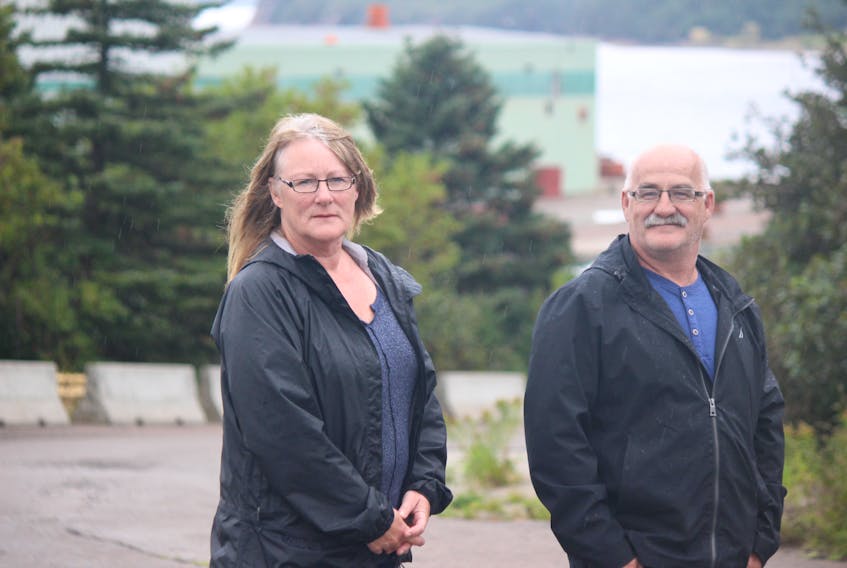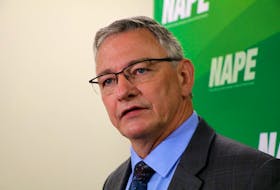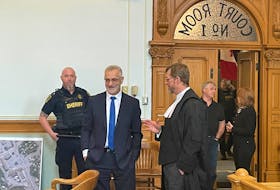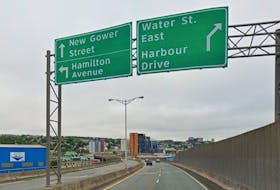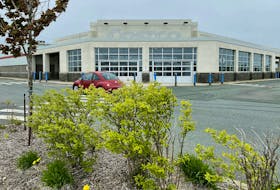MARYSTOWN, N.L. — MARYSTOWN, N.L. — Many will remember Larry Hudson, the beloved CBC correspondent with the flat British accent who died in 2015.
He primarily reported from the Burin Peninsula, but occasionally ventured into central parts of Newfoundland. His claim to fame was being the first journalist on the scene of the gruesome Arrow Air crash near Gander in 1985.
What many may not know is that he came to the province from a job with Canadian Vickers Ltd. in Quebec to become an administrator at the company’s newly constructed Marystown Shipyard in 1967.

The company wanted an East Coast facility for refitting and repairing its vessels.
“Marystown, at that time a sleepy outport, was selected as the site for the yard,” Hudson wrote for the magazine Decks Awash in 1973, “partly because of its superior harbour and partly because of its close proximity to the bases used by the major Newfoundland fleets.”
The shipyard became a provincial Crown corporation and Hudson left the business to launch his own newspaper called The Burin Post.
Marystown, through good and bad, became the modern shipbuilding capital of the province.
“Another consideration was the fact that a wooden boatbuilding yard had been located in the town,” he wrote, “suggesting that the nucleus of a workforce possessing basic shipbuilding skills would be available.”
Indeed, Marystown, through good and bad, became the modern shipbuilding capital of the province.
But the yard has another, darker legacy: industrial disease.
Long struggle
Since 2006, Bernadine Bennett has headed up the Marystown Shipyard Families Alliance, an advocacy group that has lobbied hard for workers and widows who say the toxin-laden workplace has left a trail of grief and misery.
Bennett had a co-partner in her struggles, Bertha Smith, until Smith died in 2015 of lung cancer. Smith was the widow of a yard worker, and blamed both their cancers on the prevalence of asbestos at the yard that was also tracked into their home.
Since then, Bennett has found an ally in Glenn Brown, a former welder who had been battling conflicting lung diagnoses for more than a decade without even knowing the alliance existed.

Together, Bennett and Brown have been turning up the heat since last fall, when the then-idled shipyard was sold to Marbase, an aquaculture venture headed by St. John’s businessman Paul Antle.
Ironically, the facility had to undergo a rigorous environmental cleanup before it could take any further steps toward operation.
Bennett says the province’s workers compensation board — currently Workplace NL — has taken a highly selective approach to shipyard workers since a cancer cohort study in 2002 contended the cancer rate among workers was not statistically higher than the provincial average.
That study’s findings have been contested by Toronto-based occupational health expert Dr. Noel Kerin, who says, among other things, that researchers were misguided to use the comparatively elevated Newfoundland and Labrador cancer rate as a benchmark.
Bennett says even the most obvious claims related to asbestos haven’t come easily.
‘”We don’t agree to some extent that claims should be looked at — which is happening now with the compensation board — by trade, because it’s a cesspool of toxic exposure,” she said last week.
Workplace NL has approved only about 25 per cent of more than 100 claims the alliance has put before the board.
That doesn’t include cases they don’t know about.
Wrong approach
Opposition Leader Ches Crosbie took up the alliance’s cause on a pro bono basis before jumping into politics in 2018, and he’s still going to bat for them today.
Citing Kerin, he notes that decisions by the compensation board are primarily informed by oncologists.
“Those people are great at treating cancer, but they’re not great at the causes of occupational disease, which includes cancer,” he said Friday.
“I have no recollection of how I got out of that tank.”
Crosbie said a more in-depth understanding of practices at the yard — even after occupational health and safety legislation was enacted in 1988 — is crucial.
“I can remember people describing to me being crane operators near the ceiling. You couldn’t see anything, there’s so much smoke up there. Those kind of details help,” he said.
“They also used the practice of cocooning, meaning, because of bad weather conditions, people were in more enclosed spaces than they were in a big shipyard. They were in bubbles, if you want to put it that way, which concentrates the pollution.”
Worker testimonies describe multiple categories of work happening at the same time under a large tarp.
Brown says his own lung ailments were compounded by an accident in 2003 that he doesn’t even remember. All he knows is he was in a multi-storey fuel tank to re-weld an opening and he passed out.
“My job was to go in and weld that insert back in,” he said.
“I have no recollection of how I got out of that tank.”
Brown can cite a number of radiology exams he has received — some from out of the province — which indicate damage to his spine and lungs. Radiologists have characterized the imagery as showing pulmonary fibrosis. But at least two local respirologists have written him off after he made repeated requests for a fresh diagnosis.
Workplace NL eventually banned him from even contacting them.
Time is wasting
Bennett says time is running out for many of the families.
Her group presented a 250-page compendium of background information, toxic exposures and worker testimonies to Workplace NL.
She says the agency promised a review of their case, but has since backed away.
“These witnesses are getting few and far between because they’re getting sick and passing on,” said Bennett, whose father died in 2003.
“If a widow can’t prove where her husband’s exposures came … she’s not winning her claim.”
Friday: the medical evidence

